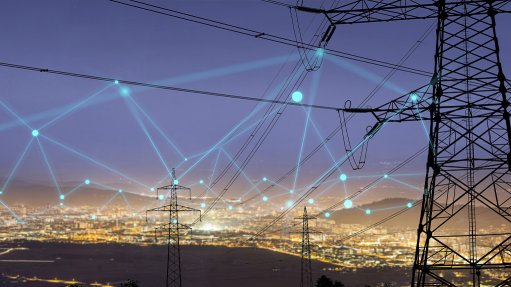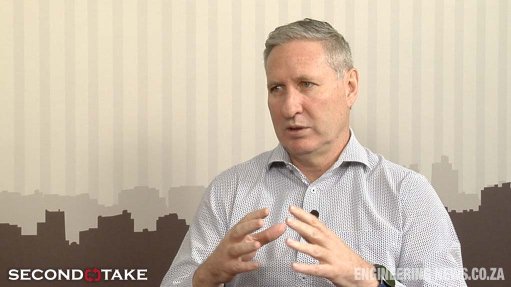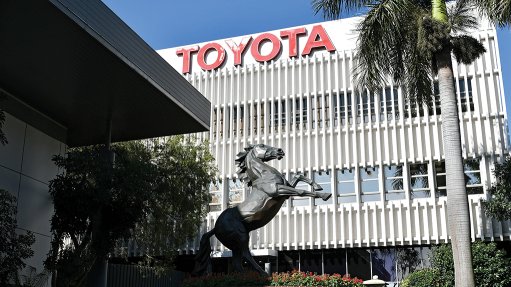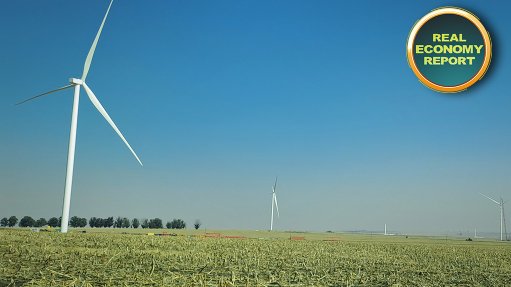Climate change and ailing infrastructure: a double-edged sword for SA’s insurance industry
This article has been supplied.
By: Cedric Masondo - CEO, PSG Insure
Is South Africa’s infrastructure able to withstand the rapid increase in fire and flooding-related incidents being caused by changes in weather patterns? The increasing frequency and intensity of storms, floods and drought have wreaked havoc on poorly maintained, ageing infrastructure, which has unfortunately become commonplace in South Africa.
Infrastructure which is proving to be the most challenging in this context includes poorly maintained roads, which pose flooding risks due to poor drainage. Certain areas have also become overly built-up with little or no retaining walls, making these buildings more susceptible to damages caused by flooding. In addition, specific regions have become more susceptible to fire hazards and damage, due to there being little or no access to critical water infrastructure, which fire brigades and fire services need access to, in order to quickly address and extinguish outbreaks of fire.
For insurers, these events have warranted more stringent underwriting policies and derisking exercises, and for advisers. It means forming closer partnerships with clients in assisting them to mitigate the emerging risks.
Severe weather-related risks as the new normal
Over the past three years, extreme weather events have increased, both in terms of their reoccurrence in certain regions as well as in areas that do not have a track record of severe weather. Examples of this have been seen in the reoccurrence of storms throughout the Western Cape, with coastal regions being buffeted by high waves and strong winds during the colder months. Margate in KwaZulu-Natal, an area that has no history of extreme weather, was hit by a storm this year that resulted in loss of life as well as extensive damage to public infrastructure.
This upsurge in natural disasters is a global phenomenon, but its impact on South Africa has been exacerbated by the deteriorating state of infrastructure. This has become particularly evident at municipal level where resources are limited and there is a major backlog in fixing infrastructure.
These challenges have been magnified by the building of new developments in areas that have not been properly assessed in terms of environmental risk. Furthermore, many of these new developments, especially in coastal regions are surrounded and serviced by infrastructure that has not been maintained to account for the increasing frequency and intensity of disasters such as floods.
The challenges presented by lack of maintenance is not only limited to flooding risks, but we have also seen water scarcity challenges in some municipalities. The lack of water due to drought and poor infrastructure has threatened the ability of municipalities to fight fire incidents.
Insurers respond to new market challenges
Naturally, the combined impact of these compounding forces has been brought to bear on the local insurance industry, which has seen a noticeable increase in the size and number of related claims over the past few years. This has in turn introduced a new level of complexity to the risk modelling process. In response, reinsurers have increased their CAT and risk deductibles, leaving insurers to absorb all non-CAT claims.
For insurers, adapting to these new exposures cannot be solved by increases in pricing alone and in many cases, insurers have been forced to derisk or reduce their risk appetite in certain geographical regions. As a result, insurers and their underwriters have become more particular about their capacity to insure properties in areas that are now known to be prone to natural disasters, especially in cases where infrastructure in those areas is also neglected or run-down. In some cases, certain insurers have withdrawn their capacity in those areas and are no longer writing such business.
The lack of maintenance and investment in water infrastructure has worsened the supply of water. In the past, the risk of fire was largely mitigated by the availability of water to fight these fires and curb the extent of the damage. Now, faced with a lack of access to water, fire hazards are a much greater threat, with total loss and destruction being a very real possibility. Previously, insurers were able to offer clients a discount depending on the relevant municipality’s fight-fighting capabilities. Today, fire-related risk in the affected regions is simply too great to warrant any substantial reduction in pricing.
The knock-on effects of this sector-wide derisking for clients is that insurers can be expected to be more selective in terms of the areas in which they deploy their capacity, how much capacity they deploy and under which conditions. Generally speaking, policy conditions will become more stringent and will ultimately require clients to bear a relatively larger duty of care in preventing and mitigating risks.
The vital role of knowledgeable advisers
Faced with a changing insurance market, clients will need to lean on the expert knowledge and guidance of advisers. It will therefore become increasingly important for advisers to be widely read and educated on the trends in climate change that directly impact the businesses of insurers and reinsurers. Equipped with this knowledge, advisers will play a pivotal role in helping clients to navigate new and emerging risks.
It has become equally important for advisers to gain an accurate overview of the sectors that are of the greatest concern to insurers as well as those that they will no longer service soon.
In addition to developing a good sense for the risk appetite of insurers and how it changes as the market evolves, advisers work closely with their clients to understand the unique needs of their businesses.
For some businesses, now may be a crucial time to implement better risk mitigation strategies such as reinforcing retaining walls to resist excess water flow and erosion or provide fire-fighting training programmes for employees. There have been cases where the most viable option for large corporates was to uproot their operations and move to a municipality with more developed infrastructure.
In these cases, advisers will continue to be invaluable sources of information and direction that can help business become futureproof and resilient, supporting clients through these uncertain times.
Article Enquiry
Email Article
Save Article
To advertise email advertising@creamermedia.co.za or click here
Comments
Press Office
Announcements
What's On
Subscribe to improve your user experience...
Option 1 (equivalent of R125 a month):
Receive a weekly copy of Creamer Media's Engineering News & Mining Weekly magazine
(print copy for those in South Africa and e-magazine for those outside of South Africa)
Receive daily email newsletters
Access to full search results
Access archive of magazine back copies
Access to Projects in Progress
Access to ONE Research Report of your choice in PDF format
Option 2 (equivalent of R375 a month):
All benefits from Option 1
PLUS
Access to Creamer Media's Research Channel Africa for ALL Research Reports, in PDF format, on various industrial and mining sectors
including Electricity; Water; Energy Transition; Hydrogen; Roads, Rail and Ports; Coal; Gold; Platinum; Battery Metals; etc.
Already a subscriber?
Forgotten your password?
Receive weekly copy of Creamer Media's Engineering News & Mining Weekly magazine (print copy for those in South Africa and e-magazine for those outside of South Africa)
➕
Recieve daily email newsletters
➕
Access to full search results
➕
Access archive of magazine back copies
➕
Access to Projects in Progress
➕
Access to ONE Research Report of your choice in PDF format
RESEARCH CHANNEL AFRICA
R4500 (equivalent of R375 a month)
SUBSCRIBEAll benefits from Option 1
➕
Access to Creamer Media's Research Channel Africa for ALL Research Reports on various industrial and mining sectors, in PDF format, including on:
Electricity
➕
Water
➕
Energy Transition
➕
Hydrogen
➕
Roads, Rail and Ports
➕
Coal
➕
Gold
➕
Platinum
➕
Battery Metals
➕
etc.
Receive all benefits from Option 1 or Option 2 delivered to numerous people at your company
➕
Multiple User names and Passwords for simultaneous log-ins
➕
Intranet integration access to all in your organisation





















